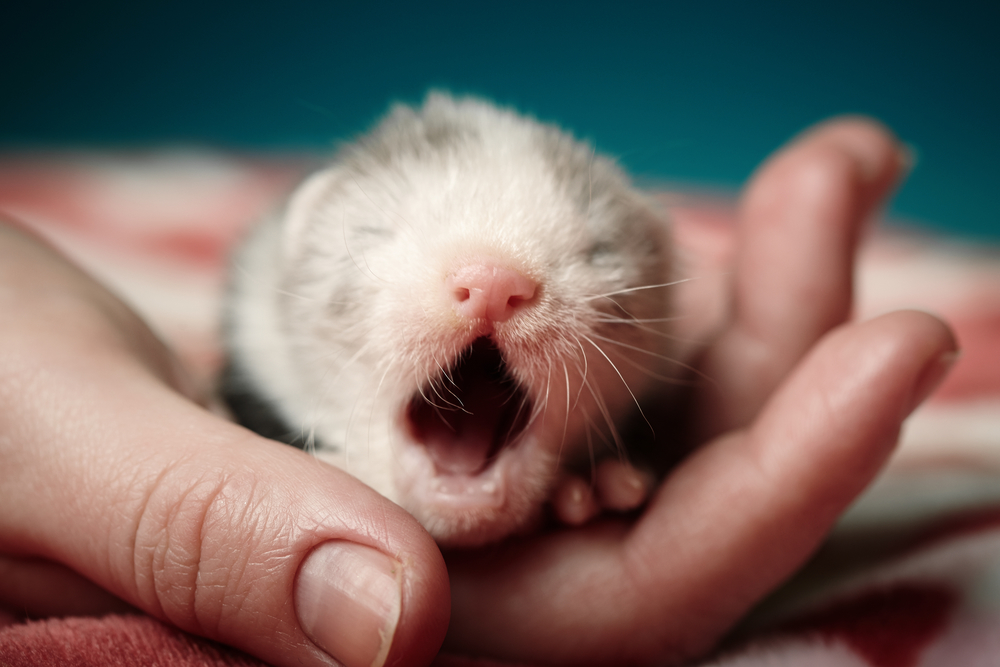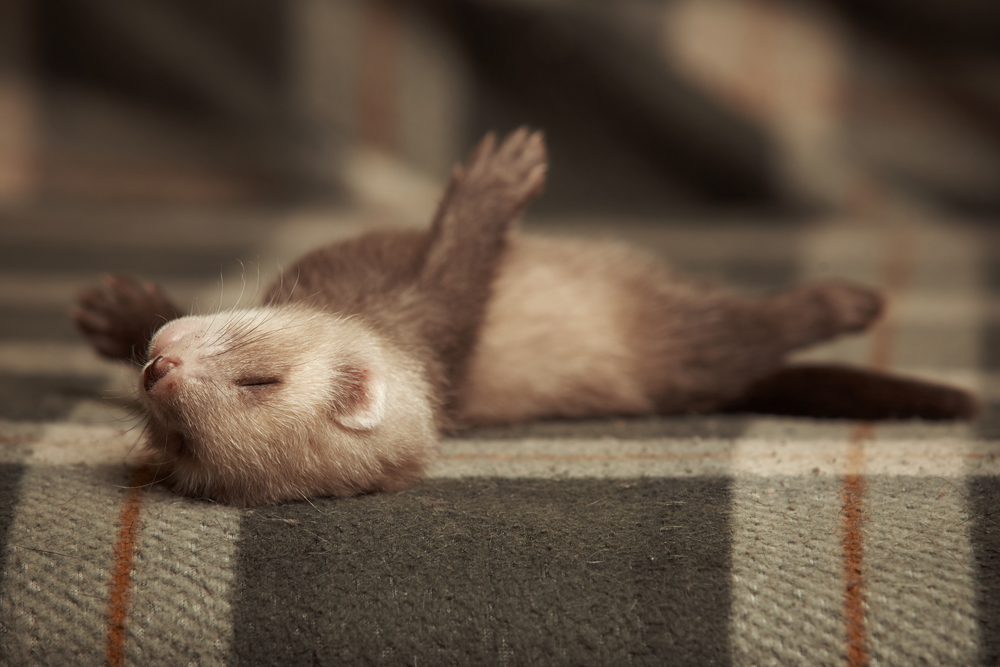Ferrets are highly social creatures and desire to live in groups. Thus, creating an outdoor housing area allows for easier ownership of multiple ferrets, and requires much less indoor ferret proofing.
Outdoor ferret enclosures should be roomy enough to allow free movement and play. There should be a sheltered sleeping area, preferably dark and lined with soft fabric, straw or hay. The floor should be solid, escape-proof and easy to clean. Food and water bowls must be placed opposite litter pans, as ferrets will not eat where they relieve themselves. Although ferrets can withstand some weather, they are easily overheated and dehydrated, and can suffer severe medical complications from dampness or extreme cold. Outdoor ferret cages should be thoroughly weatherproofed and sheltered from wind, rain and direct sunlight. The use of heavy tarpaulins during inclement weather is usually effective if the cage is open to the elements, but a better alternative is a completely enclosed shed or large hutch.
A popular means of housing multiple ferrets outdoors is called the ferret court. Consisting of a covered shed stocked with litter pans, nesting boxes and sleeping decks, as well as an attached, enclosed exercise run, a ferret court is an ideal option for outdoor housing. The run can be equipped with plastic piping for tunnelling, rocks or shrubbery for shade and hiding places, and toys to prevent boredom. As with any outdoor ferret enclosure, a ferret court should be completely weatherproofed, with access to the run provided by a small cat flap to prevent draughts.










